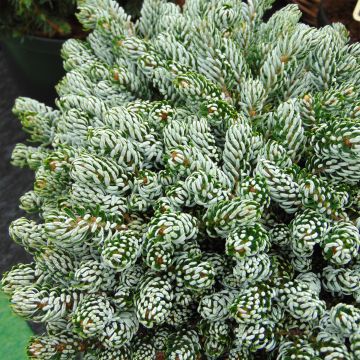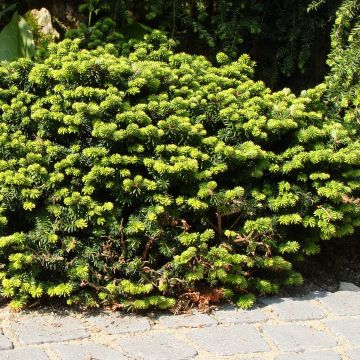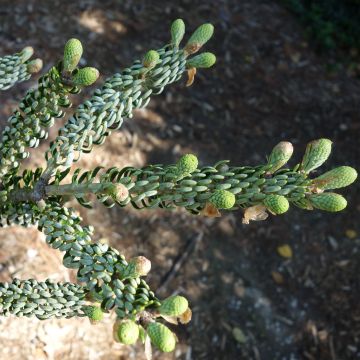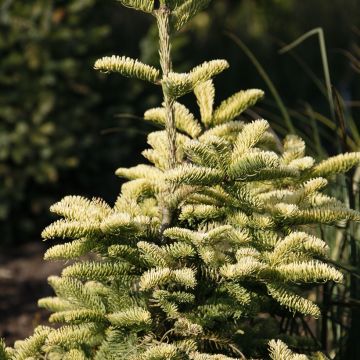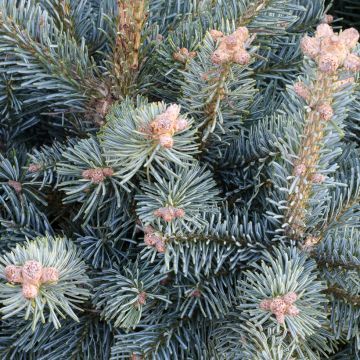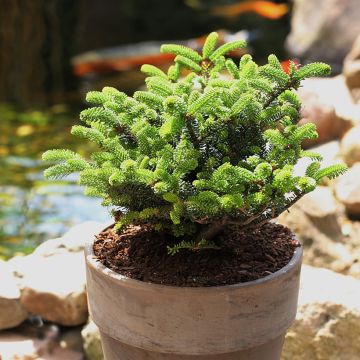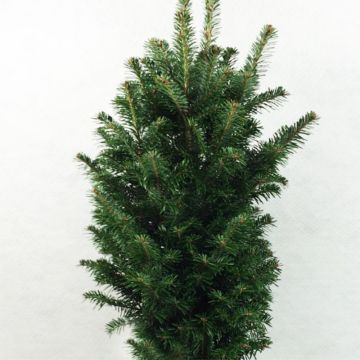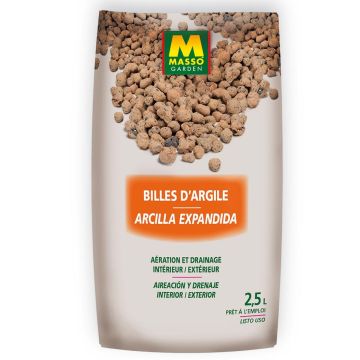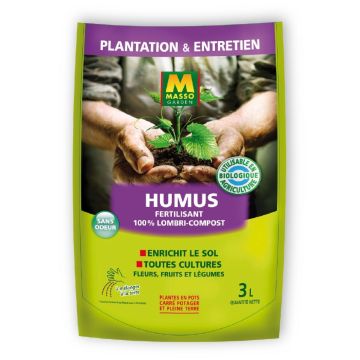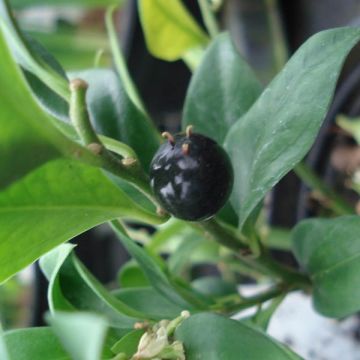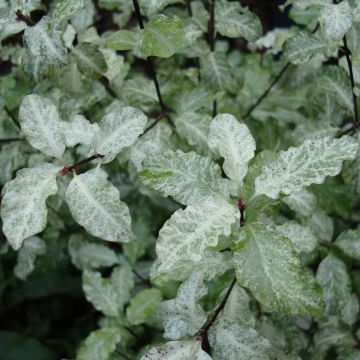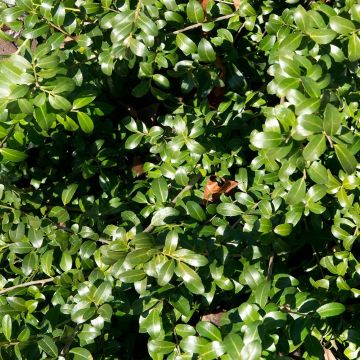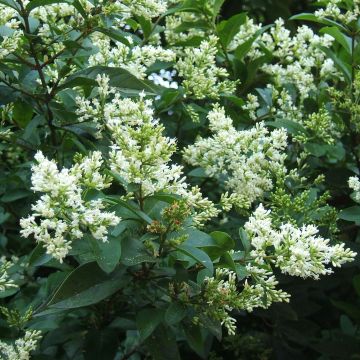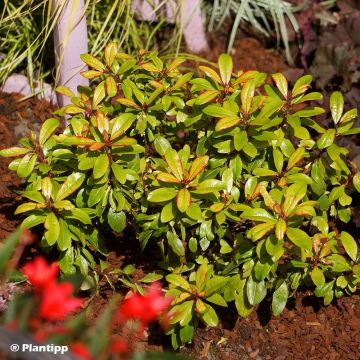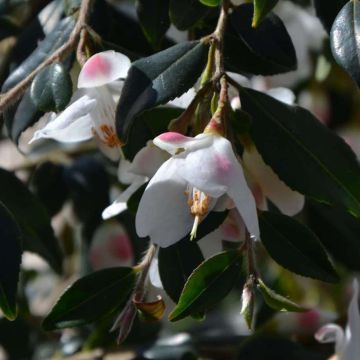

Abies nordmanniana Kolumnowa - Nordmann Fir
Abies nordmanniana Kolumnowa - Nordmann Fir
Abies nordmanniana Kolumnowa
Nordmann Fir, Caucasian Fir
Special offer!
Receive a €20 voucher for any order over €90 (excluding delivery costs, credit notes, and plastic-free options)!
1- Add your favorite plants to your cart.
2- Once you have reached €90, confirm your order (you can even choose the delivery date!).
3- As soon as your order is shipped, you will receive an email containing your voucher code, valid for 3 months (90 days).
Your voucher is unique and can only be used once, for any order with a minimum value of €20, excluding delivery costs.
Can be combined with other current offers, non-divisible and non-refundable.
Why not try an alternative variety in stock?
View all →This plant carries a 24 months recovery warranty
More information
We guarantee the quality of our plants for a full growing cycle, and will replace at our expense any plant that fails to recover under normal climatic and planting conditions.
Would this plant suit my garden?
Set up your Plantfit profile →
Description
The Abies nordmanniana 'Kolumnova' is a fastigiate variety of the famous Nordmann fir which graces our homes at Christmas. With its dense, evergreen foliage, this conifer forms a strikingly narrow column perfect as a standalone feature or at the back of a border. Its numerous small needles are green and glossy. This hardy plant thrives in partial shade, in fertile soil that retains moisture.
Belonging to the Pinaceae family, the Abies nordmanniana, also known as the Caucasian Fir or Crimean Fir, is a conifer native to the temperate regions of Western Asia. It grows in the mountain forests of Crimea and the Caucasus. In the wild, this species forms a tall, pyramidal tree reaching between 30 and 50 metres, sometimes even 60 metres in height. Its trunk can measure up to 2 metres in diameter. It owes its species name to Alexander Von Nordmann (1803–1866), a Finnish botanist, zoologist, and palaeontologist, who discovered it in 1835 during an expedition to the Caucasus.
The 'Kolumnova' variety is a Polish cultivar developed by Joanna and Bronislaw Szmit in the mid-1990s. With very slow growth, it forms a column that can reach 3 to 4 metres in height and 1.2 to 1.5 metres in width after at least 10 years of cultivation. Its foliage is dense and compact. Its needles are short, measuring 1 to 2 cm in length and 1 to 2 mm in width. They are green and glossy, with two white bands on the underside.
With its narrow, conical habit, the Abies nordmanniana 'Kolumnova' is ideal for adding vertical structure to a border. Place it at the back and pair it with the crimson-flowered David Austin rose ‘Darcey Bussell’, the large white-flowered Paeonia lactiflora ‘Avalanche’, and add lightness with an Astilbe ‘Peach Blossom’ and an ornamental grass like the golden spring foliage of Hakonechloa macra ‘All Gold’.
Report an error about the product description
Plant habit
Foliage
Botanical data
Abies
nordmanniana
Kolumnowa
Pinaceae
Nordmann Fir, Caucasian Fir
Cultivar or hybrid
Other Abies
View all →Planting and care
The Abies nordmanniana 'Kolumnova' thrives in fertile, well-drained, slightly acidic, neutral or slightly alkaline soil that retains some moisture. It dislikes dry or waterlogged soil. This very hardy conifer enjoys a position in non-scorching sun or partial shade, ideally sheltered from the wind. Water young plants regularly during the months following planting and hoe the soil in summer.
Planting period
Intended location
Care
This item has not been reviewed yet - be the first to leave a review about it.
Similar products
Haven't found what you were looking for?
Hardiness is the lowest winter temperature a plant can endure without suffering serious damage or even dying. However, hardiness is affected by location (a sheltered area, such as a patio), protection (winter cover) and soil type (hardiness is improved by well-drained soil).

Photo Sharing Terms & Conditions
In order to encourage gardeners to interact and share their experiences, Promesse de fleurs offers various media enabling content to be uploaded onto its Site - in particular via the ‘Photo sharing’ module.
The User agrees to refrain from:
- Posting any content that is illegal, prejudicial, insulting, racist, inciteful to hatred, revisionist, contrary to public decency, that infringes on privacy or on the privacy rights of third parties, in particular the publicity rights of persons and goods, intellectual property rights, or the right to privacy.
- Submitting content on behalf of a third party;
- Impersonate the identity of a third party and/or publish any personal information about a third party;
In general, the User undertakes to refrain from any unethical behaviour.
All Content (in particular text, comments, files, images, photos, videos, creative works, etc.), which may be subject to property or intellectual property rights, image or other private rights, shall remain the property of the User, subject to the limited rights granted by the terms of the licence granted by Promesse de fleurs as stated below. Users are at liberty to publish or not to publish such Content on the Site, notably via the ‘Photo Sharing’ facility, and accept that this Content shall be made public and freely accessible, notably on the Internet.
Users further acknowledge, undertake to have ,and guarantee that they hold all necessary rights and permissions to publish such material on the Site, in particular with regard to the legislation in force pertaining to any privacy, property, intellectual property, image, or contractual rights, or rights of any other nature. By publishing such Content on the Site, Users acknowledge accepting full liability as publishers of the Content within the meaning of the law, and grant Promesse de fleurs, free of charge, an inclusive, worldwide licence for the said Content for the entire duration of its publication, including all reproduction, representation, up/downloading, displaying, performing, transmission, and storage rights.
Users also grant permission for their name to be linked to the Content and accept that this link may not always be made available.
By engaging in posting material, Users consent to their Content becoming automatically accessible on the Internet, in particular on other sites and/or blogs and/or web pages of the Promesse de fleurs site, including in particular social pages and the Promesse de fleurs catalogue.
Users may secure the removal of entrusted content free of charge by issuing a simple request via our contact form.
The flowering period indicated on our website applies to countries and regions located in USDA zone 8 (France, the United Kingdom, Ireland, the Netherlands, etc.)
It will vary according to where you live:
- In zones 9 to 10 (Italy, Spain, Greece, etc.), flowering will occur about 2 to 4 weeks earlier.
- In zones 6 to 7 (Germany, Poland, Slovenia, and lower mountainous regions), flowering will be delayed by 2 to 3 weeks.
- In zone 5 (Central Europe, Scandinavia), blooming will be delayed by 3 to 5 weeks.
In temperate climates, pruning of spring-flowering shrubs (forsythia, spireas, etc.) should be done just after flowering.
Pruning of summer-flowering shrubs (Indian Lilac, Perovskia, etc.) can be done in winter or spring.
In cold regions as well as with frost-sensitive plants, avoid pruning too early when severe frosts may still occur.
The planting period indicated on our website applies to countries and regions located in USDA zone 8 (France, United Kingdom, Ireland, Netherlands).
It will vary according to where you live:
- In Mediterranean zones (Marseille, Madrid, Milan, etc.), autumn and winter are the best planting periods.
- In continental zones (Strasbourg, Munich, Vienna, etc.), delay planting by 2 to 3 weeks in spring and bring it forward by 2 to 4 weeks in autumn.
- In mountainous regions (the Alps, Pyrenees, Carpathians, etc.), it is best to plant in late spring (May-June) or late summer (August-September).
The harvesting period indicated on our website applies to countries and regions in USDA zone 8 (France, England, Ireland, the Netherlands).
In colder areas (Scandinavia, Poland, Austria...) fruit and vegetable harvests are likely to be delayed by 3-4 weeks.
In warmer areas (Italy, Spain, Greece, etc.), harvesting will probably take place earlier, depending on weather conditions.
The sowing periods indicated on our website apply to countries and regions within USDA Zone 8 (France, UK, Ireland, Netherlands).
In colder areas (Scandinavia, Poland, Austria...), delay any outdoor sowing by 3-4 weeks, or sow under glass.
In warmer climes (Italy, Spain, Greece, etc.), bring outdoor sowing forward by a few weeks.






























